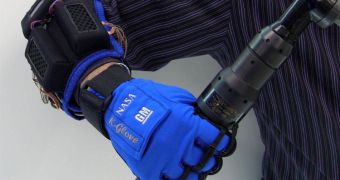NASA and General Motors are currently developing a robotic glove, which they say could have countless practical applications both in space and on the ground. The extra strength the tool provides could come in handy in many scenarios.
The American space agency has already collaborated successfully with GM, in creating Robonaut-2, a robotic assistant currently on the International Space Station (ISS). In the near future, the machine is expected to help astronauts in conducting complex spacewalks.
Now, the two organizations are focusing on the Robo-Glove technology, which basically represents a means of providing assistance to workers for various purposes. The idea first came to engineers working on Robonaut-2, so NASA and GM decided to investigate it further.
One of the main requirements for creating the assistant robot was that it was sensitive enough to work with humans. This means that it needed to have advanced tactile controls that enable it to figure out when its interactions or touches are too strong for humans to handle.
In other words, the machine can figure out the minimum amount of force needed to perform a simple task, such as for example holding a hammer, and not exert a lot of extra pressure on the object. This is what allows it to hold hands with an astronaut, for example, without breaking their bones.
“The prototype glove offers my space suit team a promising opportunity to explore new ideas, and challenges our traditional thinking of what extravehicular activity hand dexterity could be,” expert Trish Petete explains.
She holds an appointment as the chief of the crew and thermal systems division at the NASA Johnson Space Center (JSC), in Houston, Texas. According to GM manufacturing engineering director, Dana Komin, the Robo-Glove could reduce the risk of repetitive strain injuries in workers on Earth as well.
“We are continuously looking for ways to improve safety and productivity on the shop floor. Our goal is to bring this technology to the shop floor in the near future,” the GM official explains, quoted by Space.
“The K-Glove (Robo-Glove) is the first of what we expect to be many spinoffs derived from Robonaut 2,. Another example is we're developing arms built on Robonaut technology to be used on NASA's multimission Space Exploration Vehicle,” concludes Robonaut-2 program manager, Ron Diftler.

 14 DAY TRIAL //
14 DAY TRIAL //